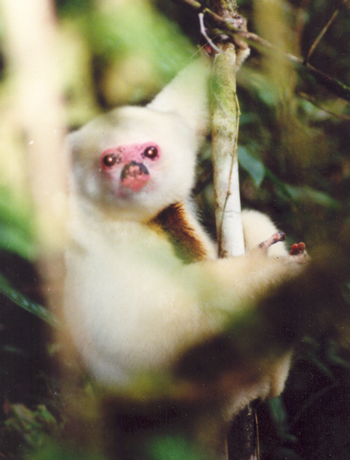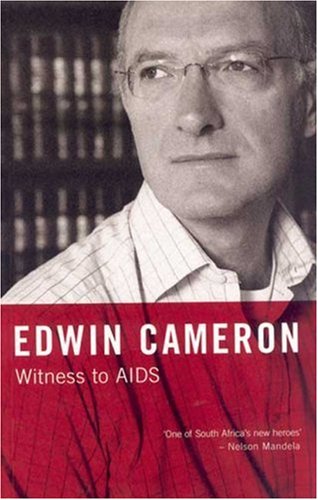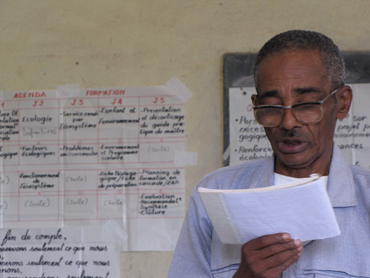By Ashley Yeager

Students map the molecules associated with memory and how they flow through a brain cell. Courtesy of Craig Roberts, Duke.
9/11. JFK’s assassination. A man on the moon.
These words probably evoke a memory of where you were and how you reacted, if you were alive when the events occurred.
The exact molecules and brain processes that form memories and make some memories stronger than others haven’t been worked out yet. But by “walking” through our brain cells, a team of Duke students is taking a more vivid look at how we remember the past.
With Duke computer science faculty, neuroscientist Craig Roberts and his students have created and tested a virtual representation of our brain cells. In this world, students move around a virtual neuron, rearranging and organizing molecules to express their understanding of our memories.

In this 3-D environment of a neuron, students can mock how molecules flow through the brain to make memories. Courtesy of Craig Roberts, Duke.
Roberts, the assistant director of education of the Duke Institute for Brain Sciences, says he trying to harness the “eventuality of the Internet,” where we’ll explore ideas and solve scientific problems on media-rich, multi-dimensional websites.
Roberts says he wanted to teach students about learning and memory. But he also wanted to experiment with whether 2-D or 3-D environments affected how different types of learners participated in class and retained what they were supposed to be studying.
He and undergrad student Daniel Wilson assessed the learning types of the students in the neurobiology class and then gauged their reactions to the 3-D environment compared to the 2-D work done in a collaborative Google document.
“We’re finding that active learners perceive greater benefit from the 2-D environment than reflective learners. Visual learners perceive greater benefit than verbal learners from the 3-D environment,” Robert says. He presented the 3-D neuronal environment, his research results and other learning media he has been experimenting with at the 2011 Society for Neuroscience meeting in Washington D.C. on Sat. Nov. 12By developing different environments in which students can learn, teachers may be able to engage all their students, independent of learning style, Roberts says.
He also said he “sees it as icing on the cake” that in a neurobiology course on learning and memory, students are working in a “learner-centric,” non-lecturing environment to expand their understanding of how they remember and recall the past.















